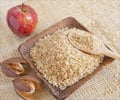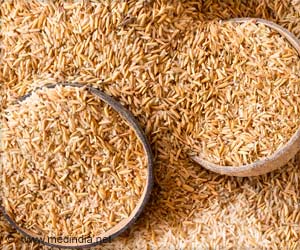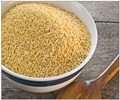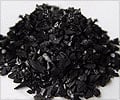Increasing levels of atmospheric carbon dioxide (CO2) due to air pollution found to decrease the nutritional value of rice with resultant malnutrition in predominantly rice eating populations.
- Nutritional value of rice grown under high levels of atmospheric carbon dioxide found to be low with reduced vitamins and essential minerals.
- Rice is low cost staple food in several developing countries and consuming rice having low nutritional value may result in malnutrition.
Details of Study
The team grew rice under experimentally created high carbon dioxide concentrations and analyzed the samples for their nutritional content. The details of the study is as follows:- The rice was cultivated at research sites in China and Japan using an open-field method where the scientists built 17-meter-wide (56-foot-wide) plastic pipe octagons raised about 30 centimeters (1 foot) above the top of the crops in standard rice fields.
- A network of sensors and monitors estimated wind speed and direction to find out how much carbon dioxide comes out of the pipes in order to increase the local carbon dioxide concentration to the desired test level. The technique is termed as Free-Air Carbon dioxide Enrichment (FACE)
- The pipes and tubes had to be raised above ground level to prevent wildlife such as raccoons from chewing through the crops and disrupting the experiment.
- The scientists assessed a total of 18 different varieties of rice for protein, iron, and zinc content. Nine varieties of Chinese rice were tested for the vitamin B1, B2, B5, and B9 levels. The medical terms for the vitamins are thiamine (B1), riboflavin (B2), pantothenic acid (B5), and folate (B9).
- The levels of key minerals and vitamins were reduced in rice grown under high CO2 levels. Specifically, concentrations of vitamins B1, B2, B5, and B9, iron, protein and zinc were reduced in rice grown under high atmospheric CO2 levels that would be expected in the second half of this century (approximately 568 to 590 parts per million).
- Interestingly not all varieties of rice demonstrated the same degree of decline in nutritional quotient. Thus, future research projects could focus on production of rice varieties that retain their nutritional value despite increased carbon dioxide levels.
Statistics estimate that nearly six hundred million people in Bangladesh, Cambodia, Indonesia, Myanmar, Lao People's Democratic Republic, Vietnam, and Madagascar derive at least 50 percent of their daily calories and/or protein directly from rice. This was also true in Japan during the 1960s, however, current Japanese receive only about 20 percent of their daily energy requirements from rice.
Takeaway from Study
The findings of the study underscore the importance of initiating urgent measures to produce rice varieties that manage to retain their nutritional value despite exposure to high atmospheric carbon dioxide.This is especially important since rice is a low cost staple diet of several populations in developing countries and are at risk of malnutrition if the nutritional value of low-cost staple foods like rice goes down.
References:
- Chris Mooney, "Rice, the staple food of billions, could become less nutritious because of climate change" (2018), journal Science Advances
- Carbon dioxide in Earth's atmosphere - (https://en.wikipedia.org/wiki/Carbon_dioxide_in_Earth%27s_atmosphere)
Source-Medindia










